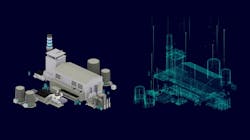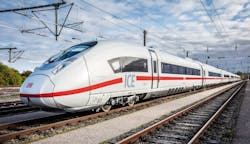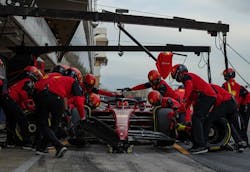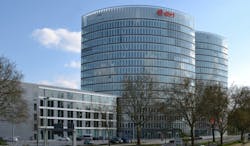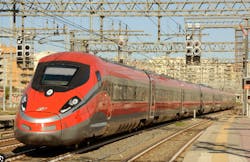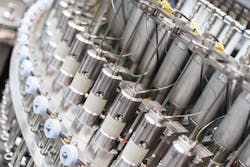IoT Analytics, a provider of market insights and strategic business intelligence around IoT (Internet of Things), AI (artificial intelligence), cloud, edge, and Industry 4.0, reviewed 100 digital twin case studies with the goal of classifying these applications into distinct groups. This effort resulted in six clusters of digital twin activity:
- Twins for system prediction—A digital twin geared toward predicting complex systems.
- Twins for system simulation—A digital twin geared toward simulating complex system behavior.
- Twins for asset interoperability—A digital twin geared toward common data formats and streamlined data extraction in complex systems.
- Twins for maintenance—A digital twin geared toward assisting with maintenance-related use cases.
- Twins for system visualization—A digital twin geared toward visualizing a complex system (e.g., in 3D).
- Twins for product simulation—A digital twin geared toward simulating the behavior of new products (mostly during the design phase).
System prediction digital twins
According to IoT Analytics, these digital twins focus on predicting the behavior and future state of a physical system using current data and relevant records of operational history. At the core of predictive digital twins are predictive models used to predict future outcomes.
- Acting as a performance watchdog where a physics-based model of the wind turbines calculates theoretical output, taking into consideration the current weather conditions, comparing the theoretical output with the actual output and flagging any anomalies.
- Acting as an output prediction tool for improved planning that predicts future power generation based on forecasted weather data.
IoT Analytics says the digital twin-based power output predictions assisted Doosan in improving wind farm revenues by increasing the output commitments the company made to South Korean energy grid operators while avoiding fines for failing to meet those commitments.
System simulation digital twins
Simulating complex systems allows engineers to test “what-if” scenarios in a large setting with many more interlinked variables playing a role than in product-level simulations, according to IoT Analytics. Examples include factory simulations prior to opening or making significant changes, rail network simulation, or traffic simulation. One of the key benefits of such simulations is to reduce costs by testing the types of assets used, key operational parameters and other important system variables prior to making the changes.
Asset interoperability digital twins
These digital twins allow for real-time extraction of data from assets along various dimensions, including asset features, characteristics, properties, statuses, parameters, measurement data and capabilities, says IoT Analytics. Although asset interoperability is an underlying goal of any digital twin project, the main idea when implementing a specific asset interoperability twin is to develop a standardized way to address assets and the ability to promptly integrate new assets to the overall system. Many asset interoperability twin initiatives align on interoperability frameworks provided by major industry consortia, such as the Digital Twin Consortium’s Interoperability framework or Platform Industrie 4.0/IDTA’s Asset Administration Shell.
Maintenance digital twins
IoT Analytics says digital twins catering to the maintenance life cycle are mostly geared toward assuring a system’s operational effectiveness, e.g., by assisting maintenance personnel during scheduled downtime or repair tasks by providing them with in-depth information about the physical asset or system. Maintenance digital twins also enable predictive maintenance use cases that aim to prevent asset failures altogether, thereby avoiding costly downtimes.
System visualization digital twins
Among the most common types of digital twin visualizations are 3D visual elements—often using CAD (computer aided design) drawings—to help create better transparency, e.g., about the current operating conditions of the system, says IoT Analytics.
Ferrovie dello Stato, the national railway operator of Italy, built a digital twin of its rail infrastructure that included more than 10,000 miles of tracks, stations, tunnels, bridges, signals, switches, electrification hardware and IT systems for the purposes of coordinating each system.
Product simulation digital twins
IoT Analytics notes that digital twins are playing a key role in developing new and improved products by eliminating the need to build costly prototypes and allowing for quick testing of thousands (in some cases millions) of product variances. “Product simulation digital twins often reside in or are closely connected to computer-aided engineering software and sometimes CAD software,” says IoT Analytics. “Typical types of simulations include fluid dynamics, mechanical performance or compatibility of electromagnetics.”
